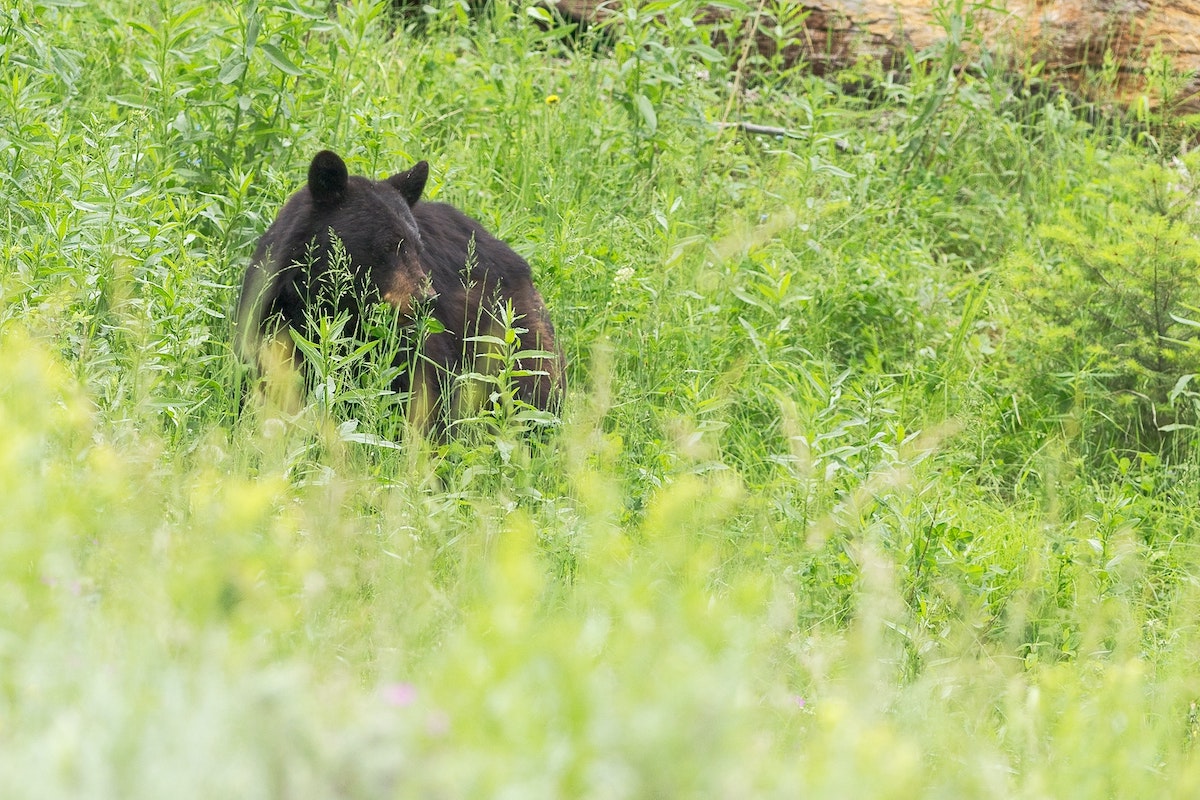
Black bear, Ursus americanus. Photo by Hans Veth.



Black bear, Ursus americanus. Photo by Hans Veth.

Seeing a large carnivore in Illinois is an uncommon event. Mountain lions, gray wolves and black bears were extirpated from the state in the mid to late 1800s. Habitat loss, overhunting and targeted predator removal all played a role in removing these large carnivores from the Prairie State. Due to the successful conservation efforts in neighboring states, seeing a large carnivore in Illinois, although extremely rare, is a possibility.
Have you seen a large carnivore? The Illinois Department of Natural Resources (IDNR) encourages you to report your sighting or observation. If you are one of the lucky few who has sighted one of these rare visitors, or if you think you have reviewable “evidence” or “proof” of a large carnivore, please submit your sighting on the Wildlife Illinois website. IDNR District Wildlife Biologists work closely with the United States Department of Agriculture – Wildlife Services (USDA-WS) to document the presence of these three large carnivore species in Illinois.

To document presence wildlife biologists need reviewable evidence, such as pictures, trail camera photos, tracks, scat, tufts of fur, and livestock depredations. Such information can help when confirming a large carnivore is in the area. It is crucial that you report your evidence or sighting as soon as you can because with each passing minute the animal gets further away, the track gets weathered, or the fur gets more deteriorated. Biologists receive numerous reports of large carnivores every year that are misidentified or reported without solid evidence or fresh enough evidence to confirm presence. It is important to be prompt, have sound details and good quality photos when reporting evidence.
It is quite easy to identify a black bear walking through a soybean field at two o’clock in the afternoon but what about properly identifying a young, 120-pound black bear 200 yards across a soybean field on the edge of the timber at 8 o’clock at night while you’re driving 55 miles per hour down the highway? Even black bear biologists could be challenged with identifying the animal under these conditions.
It is important to recognize that each large carnivore has identifiable characteristics that separate them from other animals and even their own look-alikes.

Sign left by each species, such as scat and tracks, also have identifying characteristics.
When reporting sign (tracks, scat, hair, etc.) with photographs, it is crucial to include a scale for reference. A measuring tape or a ruler are ideal, although a pen or a water bottle work fine if necessary. Place this “scale” next to or alongside the object you are trying to document. With this scale, biologists have some sort of reference when reviewing the photos. With no reference, it is difficult to determine size because the distance from the camera is not known.

Biologists must confirm sightings/reports of large carnivores, received from the public, based on science and with a “CSI-type” approach. Some sightings/reports require a site visit by trained wildlife biologists to confirm the presence of a large carnivore. If deemed necessary, IDNR and USDA-WS will conduct investigations of the location where the potential large carnivore was observed. These site investigations include follow up photos of the surrounding area with life-sized large carnivore cut-outs. These cut-outs are placed in the exact spot as the animal in your reference photo. Site visits also confirm the location of the sighting. Some reports have stated the photo was taken in Illinois, but it was from another state where established large carnivore populations occur. Various measurements are also taken to determine animal length, animal height, stride length, and distances from various cover types and natural travel corridors. Biologists will search the area for other wildlife sign or any other proof that may help them in determining a large carnivore was there. Biologists will also collect any scat or hair found to run a DNA analysis.
Wildlife biologists have confirmed the presence of 6 mountain lions, 11 gray wolves and 9 black bears within Illinois since 2002. According to a study by Southern Illinois University, only 14.7 percent of Illinois is suitable habitat for black bears, 13.9 percent of Illinois is suitable habitat for gray wolves, and 6.6 percent of Illinois is suitable habitat for mountain lions.

Documenting the presence of these three large carnivores helps IDNR and other biologists understand dispersal rates from neighboring states. This information can also help track traversing individuals, help biologists prepare to minimize conflicts with the large carnivore, and potentially monitor future natural recolonization.
Please help the IDNR and USDA-WS by reporting all sightings of large carnivores on the Wildlife Illinois Unusual Animal Sighting site but remember, have good reviewable evidence!
Dakota Bird received a B.S. degree in Wildlife and Fisheries Management from the University of Tennessee. He has held various Large Carnivore and Wildlife Damage Management positions which include Wolf Technician in Minnesota (USGS), Domestic Sheep Protection/Urban Wildlife Specialist in Arizona (USDA WS), and Black Bear Management in Tennessee (NPS) and Wisconsin (USDA WS). Currently, he is a Wildlife Biologist for USDA APHIS Wildlife Services Illinois Program (WS IL) where his primary duty is to serve as the liaison between WS IL and the Illinois Department of Natural Resources to ensure collaboration between the two agencies when it pertains to Large Carnivores and Chronic Wasting Disease.
Submit a question for the author